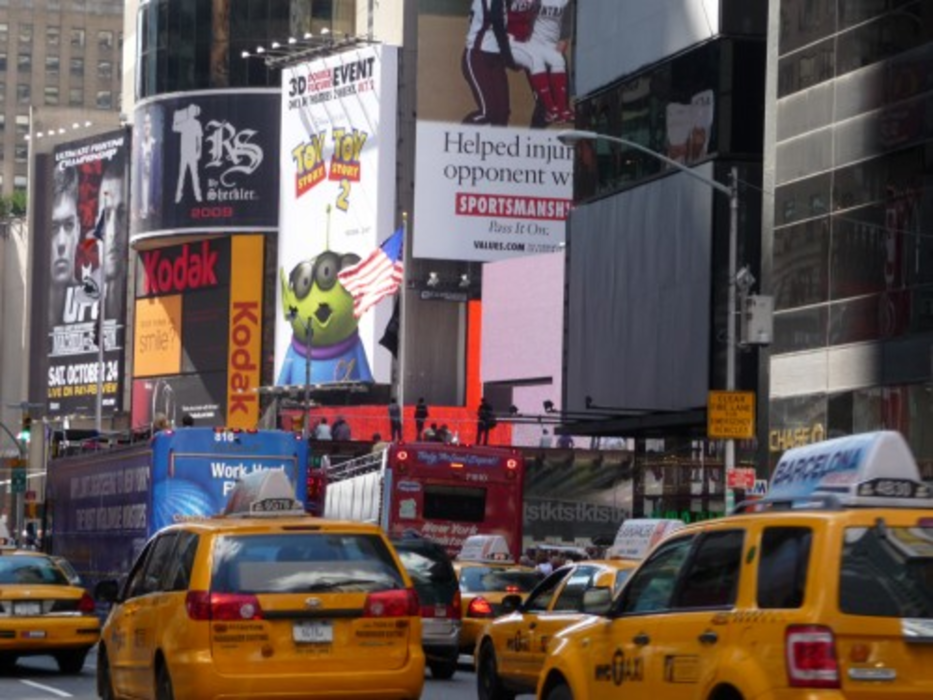If someone assembled together all the billboards in the U.S., how many football fields would they cover? According to the makers of “This Space Available,” a new documentary examining the “blight of visual pollution” in cities across the globe, the answer is 60,000.
The documentary, which premiered at the Doc NYC Film Festival on Nov. 5, asserts that city dwellers around the world, in the spirit of the Wall Street occupiers, are engaged in a grassroots struggle to reclaim their public spaces from a growing glut of billboards, electronic signs and wrapped vehicles, buildings, buses and taxis and other outdoor advertising – some of it “illegal” according to various city codes and beautification acts.
In 2007, the mayor of São Paulo, Brazil, made a little splash by successfully banning outdoor media in his city – the eight largest in the world – and new billboards have been prohibited in Houston since 1980. (That might change, though. Provisions in two bills currently circulating through the Texas Legislature might allow digital billboards in the city through a technicality. If instituted, an emergency public safety messaging network would display emergency messaging during crises … and “commercial digital messages” the rest of the time.)
Produced by Marc Gobé, author of “Emotional Branding” and founder of a think tank by the same name, and directed by his daughter Gwenaëlle, the film doesn’t claim to have the universal fix, though Gobé the father does note in the film that the marketers he spoke with all seem to agree that “brands [need] to be part of the solution not the pollution.” He discovered through multiple interviews that the business community, in general, was excited by the prospect and challenge of more effectively connecting with consumers.
Much of the problem seems to be the simultaneous laziness and aggressiveness of a lot of outdoor advertising. To stand out from the clutter, marketers need to become more and more forceful, which in turn leads to more clutter … which in turn leads to a dulled, unreceptive and passive audience that isn’t really seeing what’s in front of them. A mobius strip of clutter – certainly not what a marketer wants. Like with anything, overkill deadens the senses.
A recent Coke campaign featured in Direct Marketing News is a great example of effective outdoor that doesn’t detract from the community – in fact, it’s actually good for the environment. A carbon-dioxide-eating billboard made entirely of Fukien tea plants potted in recycled Coke bottles was unveiled in the middle of Manila’s busiest street in June, serving the dual purpose of promoting the brand and cleaning the air.
I can’t see anti-advertising activists having much of a problem with that.
But what do you think – Are brands taking billboards too far? Leave a comment below. We’d love to hear from you.








